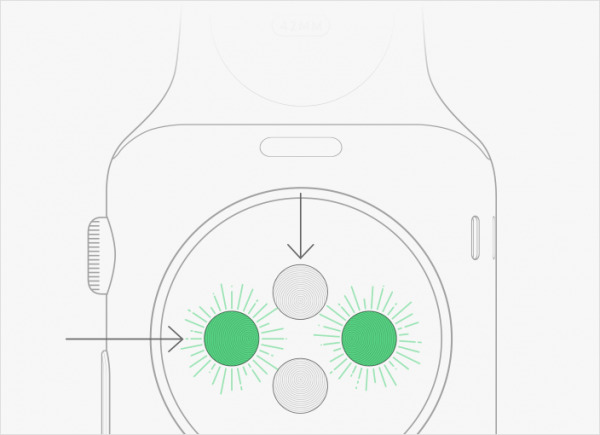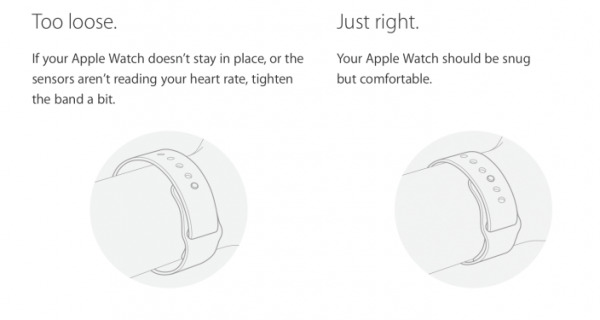Apple Watch measures perfusion for heart rate monitoring
With Apple Watch's release on the horizon, functionality details are pouring in. We'll break down how Apple Watch's heart rate sensor actually works, and go into some ways to ensure that you always get a valid heart rate reading from the device, straight from the latest Apple support document. Constantly tracking heart rate is the key to correctly tracking how many calories are burned throughout the day. The watch will not only continuously monitor your heart rate, but will offer a "Heart Rate Glance" feature where you can go back and look how your heart rate measured up at any point that day.
The Heart Rate Glance feature silently checks your heart rate every ten minutes, storing the data to be viewed later. So, it already incorporates some of the features of the single-function Emvio stress-reducing smartwatch.
The Apple Watch's pulse monitor sensor uses a method called photoplethysmography, which is the technique of measuring pulse rates by measuring the amount of light, specifically green light, that is absorbed by your wrist. With each pulse, red blood courses through your wrist. Blood is seen as red because it reflects red light waves and absorbs green light waves. To measure how much green light is absorbed, the Apple Watch flashes green LED lights against your wrist hundreds of times every second, measuring skin perfusion, which is the amount of blood flow passing through the skin's capillaries at any given time.

Skin perfusion rates can not only vary from person to person, but they can be effected by external factors, like environment, as well. The watch's reading can get thrown off by exercising in cold weather or using irregular motions in your work out, like Zumba or tennis. Incredibly, the smartwatch's sensor is devised to adjust the brightness of the green, flashing LED lights and speed up the sampling rate if it is unable to get a steady reading.

According to Apple, the watch should be worn snugly against the wrist. Now we can see that if it's too loose, the LED photodiodes won't get an accurate perfusion reading, which would throw off its heart rate data. Considering an Apple Watch is designed to be worn almost constantly, Apple released a support document detailing how safe the smartwatch's materials are against skin.
Source: 9to5 Mac
